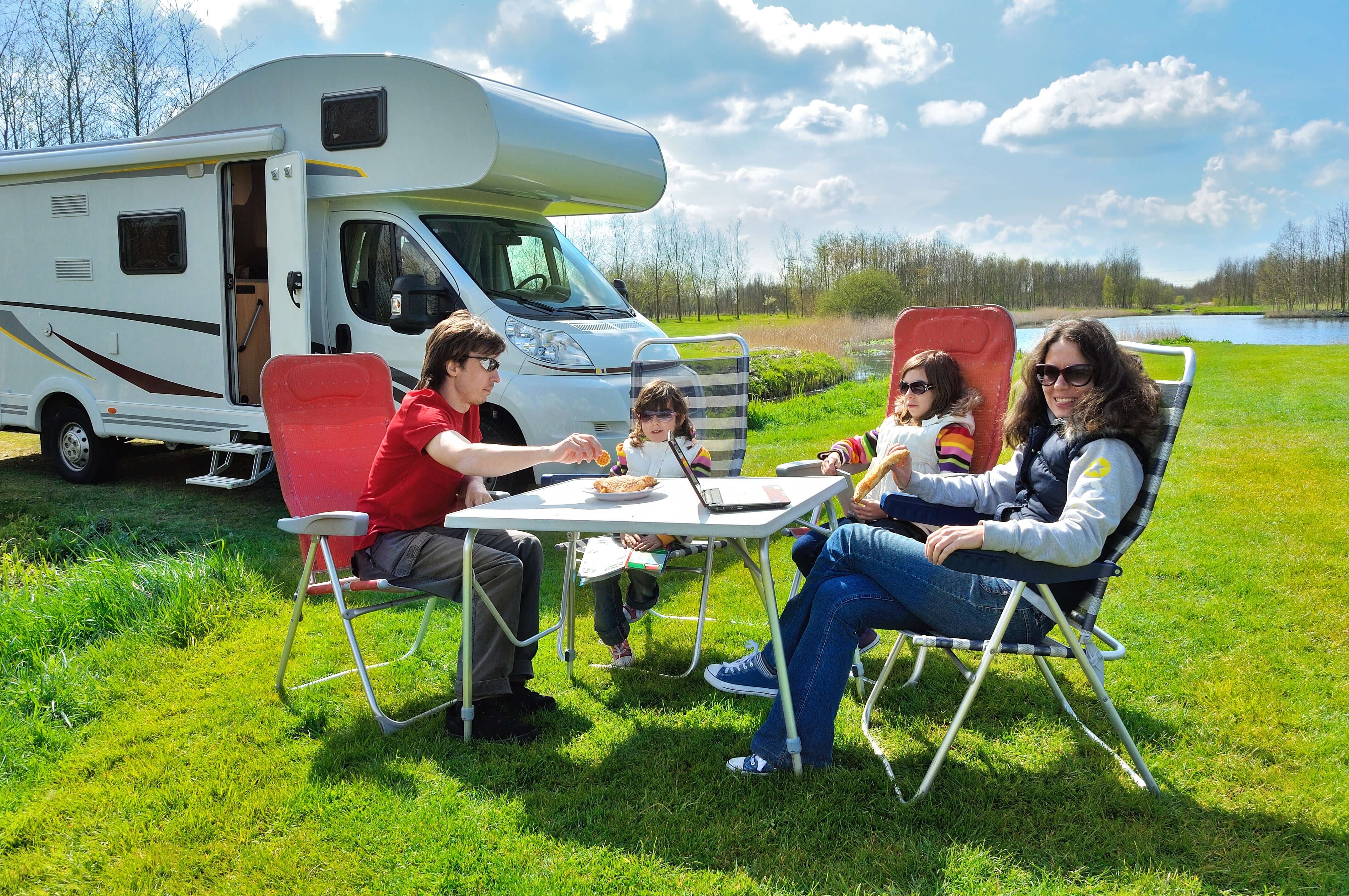Planning a holiday and wondering what to do with your water filter while you're away? Whether you're gone for a week or a few months, knowing how to store water filters when not in use is key to maintaining their performance and hygiene.
From benchtop and under sink water filters to travel filters and whole house water filters, each type of water filter requires specific care. Below, we’ll explore what to do with your water filter when you're away and how to store water filters when not in use properly.
Table of Contents
Why Stagnant Water Is a Problem for Filters
Water filters work wonders at removing the most common contaminants, but letting them sit in stagnant water can lead to bacteria growth. Since many filters are designed to trap bacteria and organic material like sediment or even e.coli, letting them sit unused in damp conditions can create a breeding ground for microbes.
This is particularly problematic if you're using untreated water sources. Without regular use or flushing, bacteria can accumulate in the filter, which can potentially compromise your water quality when you return.
Even if you’re using filtered municipal water, a filter left in standing water can still develop microbial issues, especially if exposed to heat or direct sunlight. This risk increases with the duration of time that the filter is unused, so proper preparation is essential.
If You're Using Chlorinated Town or City Water

When I went away for four weeks on a trip to the Philippines, I didn’t remove the cartridges from my benchtop filter. I left them in—but I made sure to flush the entire system with chlorinated town water for 10 minutes when I got back.
If you're on treated municipal water, you're in luck. Chlorine or chloramine in town water acts as a disinfectant and can help kill any minor bacterial growth that occurred while you were away.
That said, if you’re using a multi-stage system, make sure the cartridge that removes chlorine and chloramine is placed last in the filtration process. This allows the chlorine to disinfect the whole system before being removed.
When I returned home, I switched the cartridge order to make sure the fluoride cartridge was cleaned by the chlorinated water before going through the chlorine-removal filter.
This setup helps maintain hygiene within the system, especially if you aren’t home to perform regular flushes.
If You Plan to Remove the Cartridges
If you're planning a longer trip and don’t want to leave your cartridges in the system, removing and drying them is a good alternative—but this only works if they can dry completely.
Most cartridges are tightly sealed and don’t allow air to pass through easily. Drying them out can take several weeks depending on your climate, so make sure you have ample time.
For best results, place the cartridges in a well-ventilated, low-humidity area with indirect sunlight or use a fan to speed up the drying process. Avoid high heat sources like ovens or heaters, as they can damage the filter materials.
If the filter isn't completely dry, storing it in an airtight container can cause mould or bacterial growth. In this case, partial drying might actually be worse than leaving the filter in a chlorinated system.
Always Check the Manufacturer’s Instructions First
In some cases, your water filter might come without detailed storage instructions—or the information provided may be quite basic. If you cannot locate proper guidelines and you're planning to leave your system unused for several weeks or months, you’ll need to manually dry out your cartridges.
Properly drying your cartridges is essential to preventing mould, bacteria and unpleasant odours from developing during storage. Only once the cartridges are completely dry should they be sealed in an airtight bag or container.

How to Dry Your Water Filter Cartridges if No Instructions Are Provided
When it comes to learning how to store water filters when not in use, the very first step should always be to check the manufacturer’s instructions—if they are available. Many reputable water filter brands provide specific guidelines on how to properly dry, store and maintain your filters during periods of non-use.
Following manufacturer recommendations ensures that you are maintaining the performance and longevity of your system as intended. It also helps prevent voiding any warranty that might cover your water filter. Always prioritise these guidelines over general advice, as each system and cartridge type can have unique requirements.
The Most Important Rule: Turn Off Your Water Filter Before Leaving Home
Another critical aspect of how to store water filters when not in use—especially if you're going away for an extended period—is to turn off your water filter system before you leave.
Turning off the water filter means relieving it from mains water pressure. If the filter remains pressurised during your absence, it is at risk of damage from sudden pressure changes, such as water hammer or unexpected increases in water supply pressure. While most quality systems should have a pressure-limiting valve installed, it is still best practice not to take any chances.
Simply shut off the water supply valve connected to your filter before you leave. This simple precaution can prevent leaks, ruptures and costly damage while you’re away. It’s a small step that can save you a lot of stress and ensure your filter system remains in top condition.

How to Store Water Filters When Not in Use: Step-by-Step By Filter Type
Depending on the type of water filter system you use, the method of storage may vary slightly. Here's a breakdown of how to store water filters when not in use by category:
Travel/Portable Water Filters and Cartridges
Refer to the manufacturer’s storage instructions first.
If not in use for more than two weeks, you can usually dry them out due to their small size.
Once completely dry, store in a cool, dry place in an airtight bag or sealed container to prevent moisture exposure.
Label the storage container with the drying date and note any future maintenance steps.
Caravan Water Filters and Cartridges
Check the user manual for any specific drying or storage instructions.
If storing for a month or longer, remove and thoroughly dry the cartridges.
Place dried cartridges in airtight bags or containers and store in a moisture-free environment.
Use desiccant packs to further reduce moisture risk during long storage periods.
Water Filter Jugs, Bottles, Benchtop & Gravity Systems
Review manufacturer guidelines.
For breaks of a month or more, remove and dry the cartridges completely.
Store dried cartridges in an airtight bag in a dry location to prevent the water filter media from absorbing ambient moisture.
Clean the jug or housing thoroughly before reassembly.
Under Sink Water Filters
Turn off the filter system to relieve water pressure.
For extended absences, remove the cartridges and let them dry.
Once dry, seal them in an airtight container and store in a dry place.
Label each cartridge to ensure proper reinstallation later.
Reverse Osmosis Water Filters
Turn off the unit and empty the RO tank.
Remove the cartridges and let them dry thoroughly if the unit won’t be used for a month or more.
Store in an airtight container or bag to prevent moisture contamination.
Consider replacing the post-carbon filter on return if unsure of storage quality.
Whole House Water Filters
Turn off the main water supply to the filter.
Engage the system bypass if available.
Remove and dry cartridges if not in use for over a month.
Store dried filters in a clean, sealed and moisture-free container.
Important Tips for Returning Home
Regardless of whether you left your cartridges in or dried them out, it’s essential to flush your system when you get back. Use town water and flush for at least 10 minutes to ensure any bacterial buildup is cleared out. Again, always refer to your specific system’s flushing instructions.
For systems that use carbon filters, be aware that these need to be flushed more thoroughly, as carbon can harbour bacteria and sediment. Follow the flow direction and use clean, chlorinated water whenever possible.
If you detect any off smells or changes in taste, it may be safest to replace the filter entirely.
If you're using one of our filters and unsure about flushing procedures, you can check out our cartridge replacement and pre-flushing instructions guide.

Final Thoughts
Taking time to learn how to store water filters when not in use ensures your system remains safe, efficient and long-lasting. Proper storage helps prevent bacterial growth, keeps your water filter media intact and gives you clean water the moment you return home.
As a rule of thumb, always check your manufacturer’s manual, err on the side of drying and sealing well and give your system a good flush when you return.
Enjoy your holiday with peace of mind, knowing your water filter is taken care of properly.
Still have questions? Feel free to contact us—we’re happy to help!
Storing water filters properly while on holiday prevents bacteria buildup and maintains filter effectiveness. Whether you leave the filter installed or remove it to dry, preparation is key to avoid contamination.
Each filter type has different storage needs. From benchtop and travel filters to whole house systems, drying and storing methods vary—always follow manufacturer guidelines.
On your return, flushing your system is essential. Run chlorinated water through the system for at least 10 minutes to remove any microbial growth and ensure water quality.
Hear from Our Satisfied Customers
Can I Just Leave My Water Filter in Place While I’m on Holiday?
Yes, if you're using chlorinated municipal water, you can leave the filter in place. Just make sure to flush it with tap water for at least 10 minutes upon your return.
How Do I Dry a Water Filter Properly Before Storing It?
Let the cartridge dry in a cool, ventilated area away from direct heat. Use a fan to speed up drying and allow several days to weeks depending on humidity and filter type.
Is It Safe to Store a Damp Filter in a Sealed Bag or Container?
No. Storing a damp filter in a sealed container can lead to mould and bacterial growth. Make sure the filter is completely dry before sealing it.










